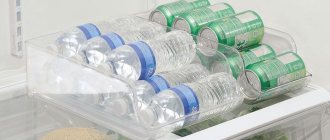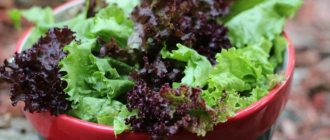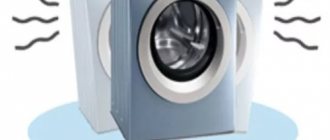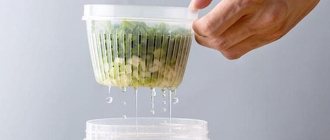How to store drinking water?
Nowadays, modern people have a huge selection of options for storing the products they need in safe places, environmentally friendly containers, and high-quality containers.
In addition to food, it is very important to know how to store water, because water is the basis of our nutrition, the basis of the entire human body. The effect of water on the human condition depends largely on how it is stored. Therefore, we invite you to familiarize yourself with the rules for storing drinking water, which will help you keep your health strong and keep the water fresh for as long as possible. Rules for storing drinking water
Water quality plays a major role in determining the appropriate storage period. Well-purified drinking water is suitable for long-term storage; poorly purified water will quickly go rotten in any container.
• You can choose different water containers depending on its use: glass, plastic, metal. Plastic and glass containers are most often used to store water. It is more convenient to store small volumes of water in plastic bottles with a lid. If you choose plastic, then choose PET bottles. They are made of polyethylene terephthalate, which does not spoil water. To save your time, we suggest ordering water delivery on our website; you will receive not only tasty and fresh water, but also a container that meets all quality standards. • PVC containers are unsafe and can “contaminate” the water with toxins. Also avoid using PVC or BPA containers. • The shelf life of water in plastic bottles depends on its quality and averages 6-12 months, so when purchasing, it is advisable to pay attention to the bottling date. • The storage temperature of water should not exceed +25 degrees, and you should also ensure that the container with water is not exposed to direct sunlight. • If you bought water in a store, follow the expiration dates indicated on the bottle. • The container in which water is stored must be tightly closed, otherwise the beneficial substances will soon die. Also, water does not last long in an open container, because oxygen entering the water changes its chemical composition. • Bottled water can be stored in polycarbonate bottles for twelve months. Water can be stored in glass containers from three months to two years, in PET containers - from three months to one year.
What is structured water, how to obtain and store it?
Many people talk about the benefits of structured water, about its beneficial effects on the human body down to the cellular and gene levels. Structured water can be conveniently stored defrosted in glass bottles
Structural changes in the composition of water occur as a result of freezing or heating. Thus, British physicists recently stated that at a temperature of 40–60 ℃ water changes its properties and there is reason to consider this the second state of aggregation of liquid water.
At home, structured water is prepared by freezing in several stages:
• First, clean filtered water in an enamel container is placed in the freezer for a short time, until a thin top layer of ice appears. This edge is removed and discarded because it contains deuterium and tritium - heavy water that freezes at temperatures of 0.28–3.8 ℃.
• Next, the water is frozen to 2/3 of the volume, the remaining unfrozen water is drained. It contains ultra-light isomers that freeze at temperatures below −1 ℃, all salts and chemical impurities.
The remaining ice will be pure structured water, which can be conveniently stored in the freezer or bottled defrosted and placed in the refrigerator.
What bottles can you store water in? For defrosted structured water, it is preferable to use glass bottles, since plastic does not maintain the structural state of water and destroys it during storage. Ideal conditions for structured water are the presence of diffused sunlight and storage in metal containers with an admixture of silver or stainless steel. Experiments by Russian scientists have revealed a significant increase in the effect of structuring water in silver dishes under the influence of light - by 7.35% in 2 hours.
What water to drink and how to store it is up to you. Our task is to deliver clean and healthy water to any point of your order in Kaluga on time.
Rules for storing drinking water
Water quality plays a major role in determining the appropriate storage period. Well-purified drinking water is suitable for long-term storage; poorly purified water will quickly go rotten in any container.
- You can choose different water containers depending on its use: glass, plastic, metal. Plastic and glass containers are most often used to store water. It is more convenient to store small volumes of water in plastic bottles with a lid. If you choose plastic, then choose PET bottles. They are made of polyethylene terephthalate, which does not spoil water.
- PVC containers are unsafe and can “contaminate” the water with toxins. Also avoid using PVC or BPA containers.
- The storage temperature of water should not exceed +25 degrees, and you also need to ensure that the container with water is not exposed to direct sunlight.
- If you bought water in a store, then follow the deadlines indicated on the bottle.
- The container in which water is stored must be tightly closed, otherwise the beneficial substances will soon die. Also, water does not last long in an open container, because oxygen entering the water changes its chemical composition.
- Bottled water can be stored in polycarbonate bottles for twelve months. Water can be stored in glass containers from three months to two years, in PET containers - from three months to one year.
These are the basic recommendations for storing water. It is better, if possible, to use water for drinking as soon as possible and not to store it for a long time. You may also find these articles useful:
Water quality plays a major role in determining the appropriate storage period. Well-purified drinking water is suitable for long-term storage; poorly purified water will quickly go rotten in any container.
Tips and facts
Which material is best for storing water?
This is such a simple question, it would seem. If you need to transport or store purified water, what is the best way to do this? Of course, if transportation takes 10 minutes, then the question posed in the title of this article is not worth a damn. But, if you need to store a supply of water, say, for a day?
So, let's not beat around the bush, but get straight to the point:
1. The best place to store water is in glass containers . Yes, ordinary glass is the least aggressive medium in principle; it does not react with water and does not spoil it in any way. The disadvantage of glass is its weight and fragility.
Subtleties of drinking water storage
Everyone knows the saying “water is the basis of life.” It is especially relevant in our time, when tap water for drinking and domestic needs must be further purified. Some people install filtration systems in their homes, others buy purified water in special plastic bottles. This raises the question, how long can you store water in plastic, and is it possible at all?
Despite the fact that tap water undergoes multi-level purification using a variety of filters and chemicals, its quality and taste are far from the required standards.
Even after standing for a long time, tap water changes color, a green or rusty sediment and an unpleasant odor appear in it. Drinking such water is extremely dangerous.
How to store water
Let's return to the topic of storing water in plastic containers. Manufacturers of purified water claim that water is stored in such containers for a long time and safely. The bulk of water bottles are made from special food-grade plastic PET(E), which does not enter into chemical reactions with the contents of the bottle and therefore does not pose any threat to human health.
The label should be checked every time you purchase water; it should be stamped on the container. Sometimes, instead of safe markings, the abbreviation PVC is found. Such containers are made of potentially hazardous plastic, which is not intended for storing food products, including water.
Important! The PET(E) symbol on the bottle is a guarantee of the use of high-quality and safe plastic for its production.
The duration of storage of water in a sealed container is determined by its original quality and varies from six months to a year, so when choosing, you should carefully study the label for the bottling date.
The place where the water will be stored is also important. A corner without access to direct sunlight and a sufficient distance from devices that generate heat is best suited, since the temperature regime for storing water is 20-30 degrees. Water in open bottles can be stored for no more than a week.
To increase the shelf life of tap water, it should first be purified using a filter, then poured into a glass jar and allowed to stand for a while to get rid of chlorine vapors. Then cover with a tight lid and use within three days. This water will last a couple of days longer in the refrigerator.
Fans of boiling should remember that such water has no benefit, since heating to 100 degrees kills not only pathogens, but also beneficial bacteria.
Tomato garnisher without cooking
The recipe requires the following ingredients:
- red tomatoes – 1 kg;
- horseradish root – 80 g;
- garlic – 60 g;
- ground red pepper – ½ tsp;
- sugar – 1 tsp;
- salt – 3 tsp.
- Remove the skins from the tomatoes and grind.
- Grind the horseradish in a meat grinder, and grind the garlic through a press.
- Combine ingredients, add spices, mix.
- After 1-2 hours, pour the freezer for the winter into sterile jars and seal tightly with metal lids.
Interesting: How to recognize a bad chicken headlight
How to properly store water
How to store water? Until recently, such a question would have caused outright bewilderment and laughter. Why store water when you always have it in your tap – crystal clear and refreshingly tasty? You can drink it as much as you like until your teeth ache!
Now we have come to the point that tap water for drinking and cooking has to be purified by passing it through a filter, or we have to buy “spring” water in polymer bottles and carboys of various capacities. We store it in them. Is it possible to store water in plastic bottles?
Water from different sources can vary greatly in composition and content of various micro- and macroelements, aerobic bacteria. To make it suitable for drinking, tap water is purified in several stages: mechanical filtration, sedimentation, filtration through a layer of sand, aeration, sterilization. In this case, chemical reagents (calcium hydroxide, ammonium sulfate, ozone or chlorine) are used to help purify the water from the smallest suspended particles and almost all types of bacteria. However, the quality and taste of drinking tap water leave much to be desired.
When tap water sits for a long time, floating flakes, hard sediment, and a greenish tint often form. It is simply dangerous to drink such water.
How to store water
Returning to the issue of plastic bottles, according to manufacturers, it is possible and necessary to store water in them.
Plastic water containers are mainly made from food grade PET(E) (polyethylene terephthalate), which is neutral, meaning it does not interact with water and is harmless to health. The plastic markings can be seen - they should be embossed on the bottle. Sometimes you can find bottles made of PVC plastic (it is toxic) or melamine (not suitable for storing water).
Pay attention to the labeling of plastic bottles. The PET(E) mark means that the container is harmless to health.
The shelf life of water in plastic bottles depends on its quality and averages 6-12 months, so when purchasing, it is advisable to pay attention to the bottling date. For storage, it is better to choose a dark place away from radiators and heating devices, the optimal temperature is 20-30 ℃. Water should not be kept in open bottles for more than 5-7 days.
tap water for storage and pour it into a glass, enamel or plastic (PET) container, let it sit for several hours (leave overnight), without closing it tightly, so that the chlorine vapors evaporate. Then the containers with water should be tightly closed and stored at room temperature (no more than 2-3 days) or in the refrigerator.
If you prefer to use only boiled water , then it is better to keep it in an enamel container under a tightly closed lid in small volumes, that is, do not boil it for future use. How long boiled water can be stored depends on its initial composition and quality, and the degree of preliminary purification. Boiling kills all bacteria existing in water, including beneficial ones, and when boiled water sits for a long time, microorganisms enter it from the external environment, so the effect of boiling is reduced to zero.
Do not store boiled water for more than 12 hours.
Well or spring water is best stored in glass or ceramic (clay) containers. When hermetically sealed, it can retain its natural beneficial properties for up to 3 years. Metal cans or barrels for storing water should only be enameled or coated with another neutral layer on the inside.
Gorloder: boiled recipe, canning
For preservation, you can use the following recipe.
Interesting: How to Keep Meat in the Refrigerator for a Long Time
- tomatoes - two and a half kilograms;
- apples - half a kilo;
- sweet pepper - half a kilo;
- garlic – one hundred and twenty grams;
- dill - fifty grams;
- vinegar - two large spoons;
- hot pepper – one hundred grams;
- parsley - fifty grams;
- sunflower oil - one glass;
- black pepper and salt to taste.
- Sterilize and heat the container before storing.
- Wash vegetables under running water.
- Remove seeds and core from peppers and apples.
- Cut the tomatoes into cubes.
- Grind the remaining ingredients in a blender or meat grinder.
Pour the resulting mass into a container, add vinegar, spices and vegetable oil. Place the pan over medium heat and cook for at least 2 hours. Dill and parsley can also be ground in a blender or finely chopped, then added to the sauce before the end of cooking.
The hot seasoning is poured into jars and rolled up.
Jars can be stored in a pantry or basement.
The nuances of storing water in bottled containers
If you look back 20-25 years, the purchase and home delivery of bottled drinking water seemed more like a “show off” for wealthy people than an urgent need. Today, any person concerned about the quality of drinking water from the tap can afford such a “whim”.
It is no secret that environmentalists have been sounding the alarm about water pollution in cities for a long time and predicting water collapse in the future. Psychologists and sociologists scare people who care about their health with the growing rhythm of life, terrible stress and other “benefits” of civilization. Meanwhile, our body cannot breathe car exhaust, drink “chemically contaminated” water and still be healthy. To nourish your body and mind you need to drink quality drinking water. But where can I get it?
Bottled water - quality criteria
The best alternative to tap liquid at the moment is considered to be bottled natural water, which meets the requirements of GOST and sanitary standards. According to these standards, a product extracted from a well and processed in a factory must be placed in hygienic containers. This drinking liquid should not contain chemical additives, dyes, sweeteners or other extracts.
Regarding the composition of bottled water, experts divide this product into three main types:
- Mineral water;
- Drinking and table water;
- Artificial water obtained by purifying tap water.
Please note that the quality and shelf life of the product depend on the method of storing water in bottles. It would be a good idea to study the basic operating rules in order to create optimal conditions for storing water.
The most common mistakes when storing bottled liquid
Do not leave an open container of water in direct sunlight or near a heating device. Mold and fungi grow very quickly on such a container.
Other common mistakes are listed below:
- Polycarbonate and plastic containers that you leave under water should not be stored in dust or in areas with high humidity;
- You should not leave the bottle near a source of strong odor, as the container will absorb the odor and transfer it to the water;
- Water in containers should not be stored at temperatures below -2 and above +25 degrees Celsius.











